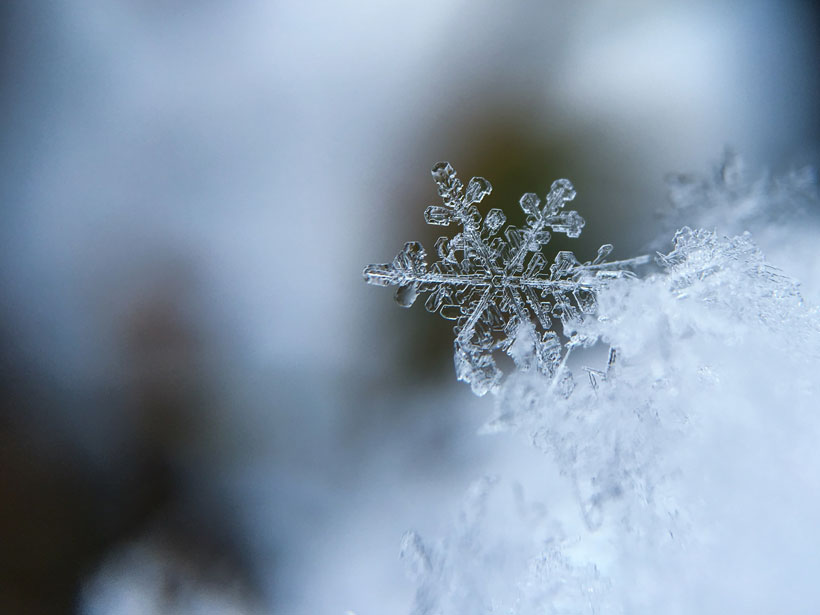Although snowfall is often seen as a nuisance—a chore to be shoveled, a danger to drive on, a reason for flight delays—snow is also a vital component of the hydrological cycle on Earth. Snowpacks store water and release it over time. This release can be gradual, sustaining agriculture and ecosystems long into summer months, or dangerously rapid when rainfall melts huge swaths of snow all at once, creating flash floods and other water management challenges. Snow’s socioeconomic impact extends to tourism and the multibillion-dollar skiing industry.
“This is a good study, and it comes at the right time—a time when a lot of us have passively accepted snow droughts as the new normal.”
Yet despite snow’s enormous importance, Laurie Huning, a hydrologist at California State University, Long Beach, said snow droughts have been understudied relative to other types of drought, which is why she and her colleague Amir AghaKouchak sought to create a framework for monitoring and describing the phenomenon around the world.
Melt to Measure
One of the best ways to quantify snowpacks is to calculate the snow water equivalent (SWE), the total amount of water that would be produced if the snow were to melt. Huning and AghaKouchak used the SWE to create a new index that shows where snow is and isn’t falling across the entire globe. “This is a good study, and it comes at the right time—a time when a lot of us have passively accepted snow droughts as the new normal,” said Dongyue Li, a hydrologist at the University of California, Los Angeles, who was not involved in the research. “Basically, this can be used to monitor or predict snow extremes. I think there are a lot of potential applications at both global and regional scales.”
Calculating snow water equivalent is a particularly challenging endeavor for scientists, and the researchers created the new metric using data from two main sources. Remote sensing from the Moderate Resolution Imaging Spectroradiometer provides information about the spatial extent of snow, whereas NASA’s Modern-Era Retrospective Analysis for Research and Applications, Version 2 (MERRA-2) provides data on the snow water equivalent. The data in MERRA-2 come from a combination of modeling and observations from research stations around the world.
For now, the coarse resolution of MERRA-2 means that there are still large uncertainties in the global SWE data, a limitation the authors acknowledge. “This large uncertainty comes from a lack of snow measurements,” said Li. “The model data may not be totally correct, but it’s the best we have. That doesn’t drop the novelty or the significance of this work. The entire hydrological community agrees that the snow is a relative weak point.”
Where Goes the Snow?
The MERRA-2 data used in the study spanned from October 1980 to September 2018, which the researchers divided into two observational periods for comparison. Relative to the 1980–1999 time period, the 2000–2018 time period showed a number of trends.
“You don’t see uniformity across the globe,” said Huning. Snow droughts became more common in the western United States, Europe, and Russia. At the same time, the Hindu Kush, Himalayas, extratropical Andes, and Patagonia experienced less snow drought. The western United States showed the biggest loss of snow, with droughts increasing in duration about 8% on average.
A useful snow water equivalent index could have real economic benefit for stakeholders and policy makers as they attempt to forecast disasters and balance water usage across sectors such as agriculture, hydropower, and domestic consumption.
Finally, the researchers used their new framework to analyze recent snow droughts in the western United States (2014–2015) and Afghanistan (2017–2018). Li said that the ability to apply the new framework at different spatial scales is part of what makes the new publication so useful. Because precipitation is critical to so many facets of human life and civilization, a useful snow water equivalent index could have real economic benefit for stakeholders and policy makers as they attempt to forecast disasters and balance water usage across sectors such as agriculture, hydropower, and domestic consumption. When the pandemic ends, it might even help you plan your next ski trip.
Huning and AghaKouchak published their results earlier this month in Proceedings of the National Academy of Sciences of the United States of America.
—David Shultz (@dshultz14), Science Writer
Citation:
Shultz, D. (2020), New tool quantifies and predicts snow droughts, Eos, 101, https://doi.org/10.1029/2020EO148410. Published on 31 August 2020.
Text © 2020. The authors. CC BY-NC-ND 3.0
Except where otherwise noted, images are subject to copyright. Any reuse without express permission from the copyright owner is prohibited.

